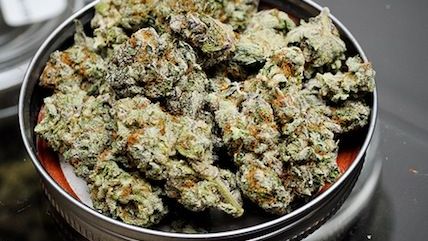Here's Why Medical Marijuana Dispensaries Should Look Forward to Sequestration


The automatic budget cuts set to take place this Friday might have government contractors on edge, but they could also bring sweet relief for medical marijuana dispensary owners fearful of government crackdowns. According to the OMB's report to Congress, the Drug Enforcement Administration will lose $166 million from its $2.02 billion staffing and appropriations budget, reducing its funding to the levels of 2002-2003, when the DEA first began coordinated crackdowns on medical marijuana dispensaries.
A decade into its fight against medical marijuana, a cash-strapped DEA would arguably have bigger priorities, such as cartels and prescription pill mills.
With $166 million less to work with, will the DEA finally have to prioritize its resources?
Keep in mind, the rest of the federal drug war apparatus is also getting a haircut:
- DOD's Drug Interdiction and Counter-Drug Activities budget of $1.6 billion will be reduced by $157 million
- DOJ's Interagency Crime and Drug Enforcement budget of $528 million will be reduced by $43 million
- The DEA Diversion Control Fee Account budget of $335 million will be reduced by $25 million
- The Office of National Drug Control Policy budget of $25 million will be reduced by $2 million
- The High-intensity Drug Trafficking Areas Program budget of $239 million will be reduced by $20 million
- "Other Federal Drug Control Programs," with a total budget of $100 million, will undergo $8 million in cuts.
For reasons unbeknownst to this reporter, the White House has yet to raise the point that sequestration will hamper the drug war. For instance: Attorney General Eric Holder sent a letter to Sen. Barbara Mikulski earlier this month detailing which of his agencies would be most affected by sequestration, and the DEA was conspicuously absent from that list.
(To be fair: the state-by-state fact sheets the White House released did emphasize decreased funding for drug treatment, which means we'll find out really quickly whether states and local governments are still interested in diverting addicts from prison to treatment only if the federal government pays them to do so.)
Former ONDCP advisor John Carnevale estimated in Dec. 2011 that the sequester would impact federal drug spending in the following ways:
Prevention is most affected: About 78 percent of the total $1.7 billion requested for prevention is identified in an appropriation bill and would therefore absorb the full effect of a sequester.
Law Enforcement, treatment, and international programs are roughly equally affected: We estimate that 41 percent of the $2.1 billion international budget, 35 percent of the $9.5 billion domestic law enforcement budget, and 32 percent of the $9.0 billion treatment budget is directly affected by a sequestration.
Interdiction is least affected: We estimate that 11 percent of the $3.9 billion allocated to interdiction is directly affected by a sequestration.



Show Comments (10)